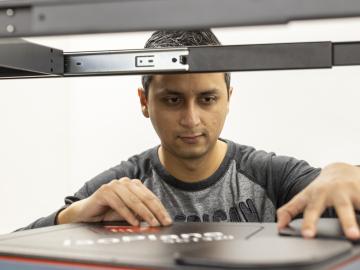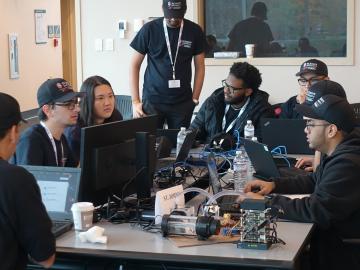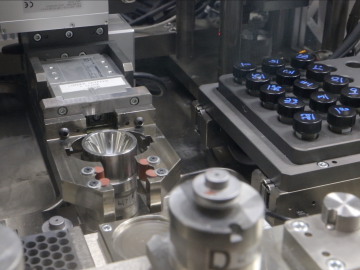
Filter News
Area of Research
- (-) National Security (44)
- (-) Nuclear Science and Technology (22)
- Advanced Manufacturing (6)
- Biological Systems (1)
- Biology and Environment (121)
- Biology and Soft Matter (1)
- Computational Biology (2)
- Computational Engineering (3)
- Computer Science (9)
- Electricity and Smart Grid (3)
- Energy Science (123)
- Functional Materials for Energy (1)
- Fusion and Fission (28)
- Fusion Energy (15)
- Isotope Development and Production (1)
- Isotopes (28)
- Materials (113)
- Materials for Computing (12)
- Mathematics (1)
- Neutron Science (125)
- Quantum information Science (4)
- Sensors and Controls (1)
- Supercomputing (106)
News Topics
- (-) Biomedical (4)
- (-) Cybersecurity (19)
- (-) Environment (6)
- (-) Fusion (9)
- (-) Grid (6)
- (-) Isotopes (5)
- (-) Machine Learning (12)
- (-) Neutron Science (9)
- (-) Physics (3)
- (-) Space Exploration (5)
- (-) Summit (2)
- 3-D Printing/Advanced Manufacturing (6)
- Advanced Reactors (12)
- Artificial Intelligence (12)
- Big Data (6)
- Bioenergy (4)
- Biology (5)
- Biotechnology (1)
- Buildings (1)
- Chemical Sciences (2)
- Computer Science (21)
- Coronavirus (3)
- Energy Storage (2)
- Exascale Computing (1)
- Frontier (1)
- High-Performance Computing (4)
- Materials (2)
- Materials Science (6)
- Molten Salt (4)
- Nanotechnology (1)
- National Security (35)
- Nuclear Energy (40)
- Partnerships (5)
- Quantum Science (1)
- Security (11)
- Simulation (1)
- Transportation (2)
Media Contacts

The techniques Theodore Biewer and his colleagues are using to measure whether plasma has the right conditions to create fusion have been around awhile.

A novel approach developed by scientists at ORNL can scan massive datasets of large-scale satellite images to more accurately map infrastructure – such as buildings and roads – in hours versus days.

To better determine the potential energy cost savings among connected homes, researchers at Oak Ridge National Laboratory developed a computer simulation to more accurately compare energy use on similar weather days.

As scientists study approaches to best sustain a fusion reactor, a team led by Oak Ridge National Laboratory investigated injecting shattered argon pellets into a super-hot plasma, when needed, to protect the reactor’s interior wall from high-energy runaway electrons.

Oak Ridge National Laboratory will give college students the chance to practice cybersecurity skills in a real-world setting as a host of the Department of Energy’s fifth collegiate CyberForce Competition on Nov. 16. The event brings together student teams from across the country to compete at 10 of DOE’s national laboratories.

If humankind reaches Mars this century, an Oak Ridge National Laboratory-developed experiment testing advanced materials for spacecraft may play a key role.

IDEMIA Identity & Security USA has licensed an advanced optical array developed at Oak Ridge National Laboratory. The portable technology can be used to help identify individuals in challenging outdoor conditions.

Gleaning valuable data from social platforms such as Twitter—particularly to map out critical location information during emergencies— has become more effective and efficient thanks to Oak Ridge National Laboratory.

By automating the production of neptunium oxide-aluminum pellets, Oak Ridge National Laboratory scientists have eliminated a key bottleneck when producing plutonium-238 used by NASA to fuel deep space exploration.

Scientists from Oak Ridge National Laboratory performed a corrosion test in a neutron radiation field to support the continued development of molten salt reactors.


